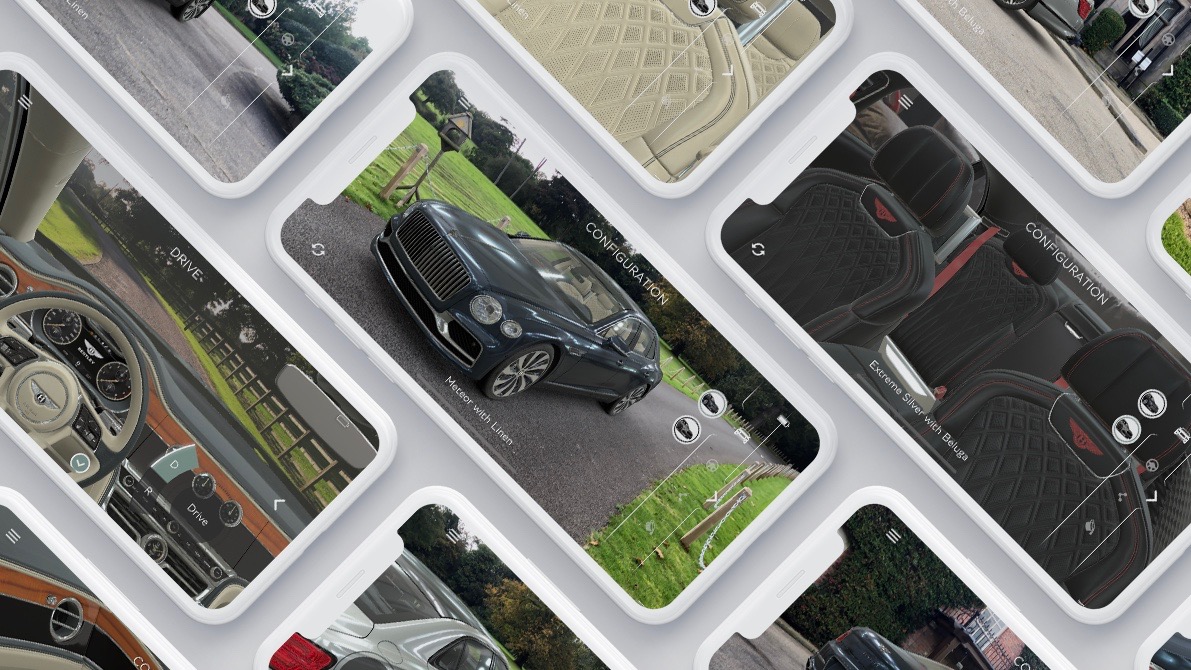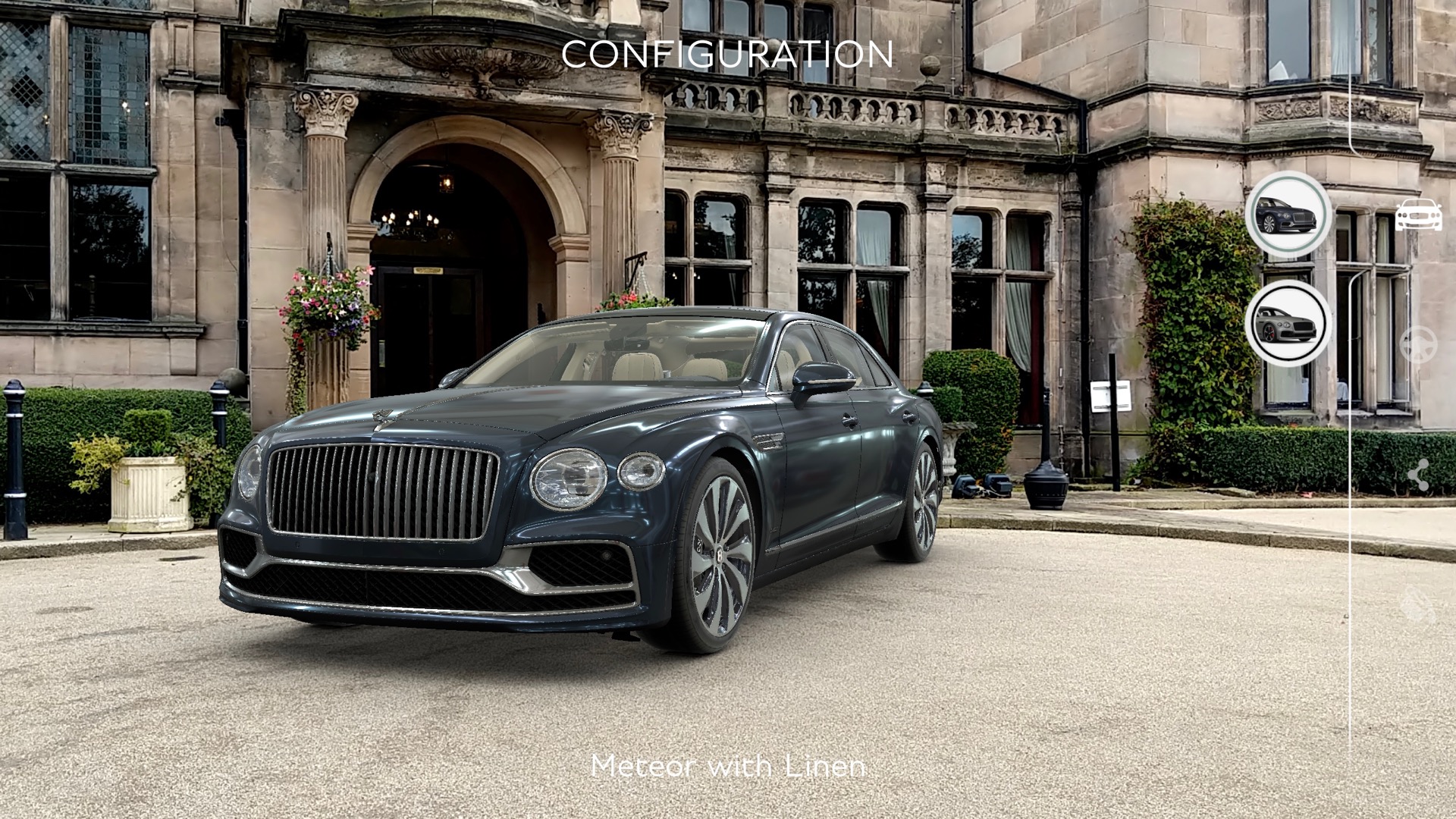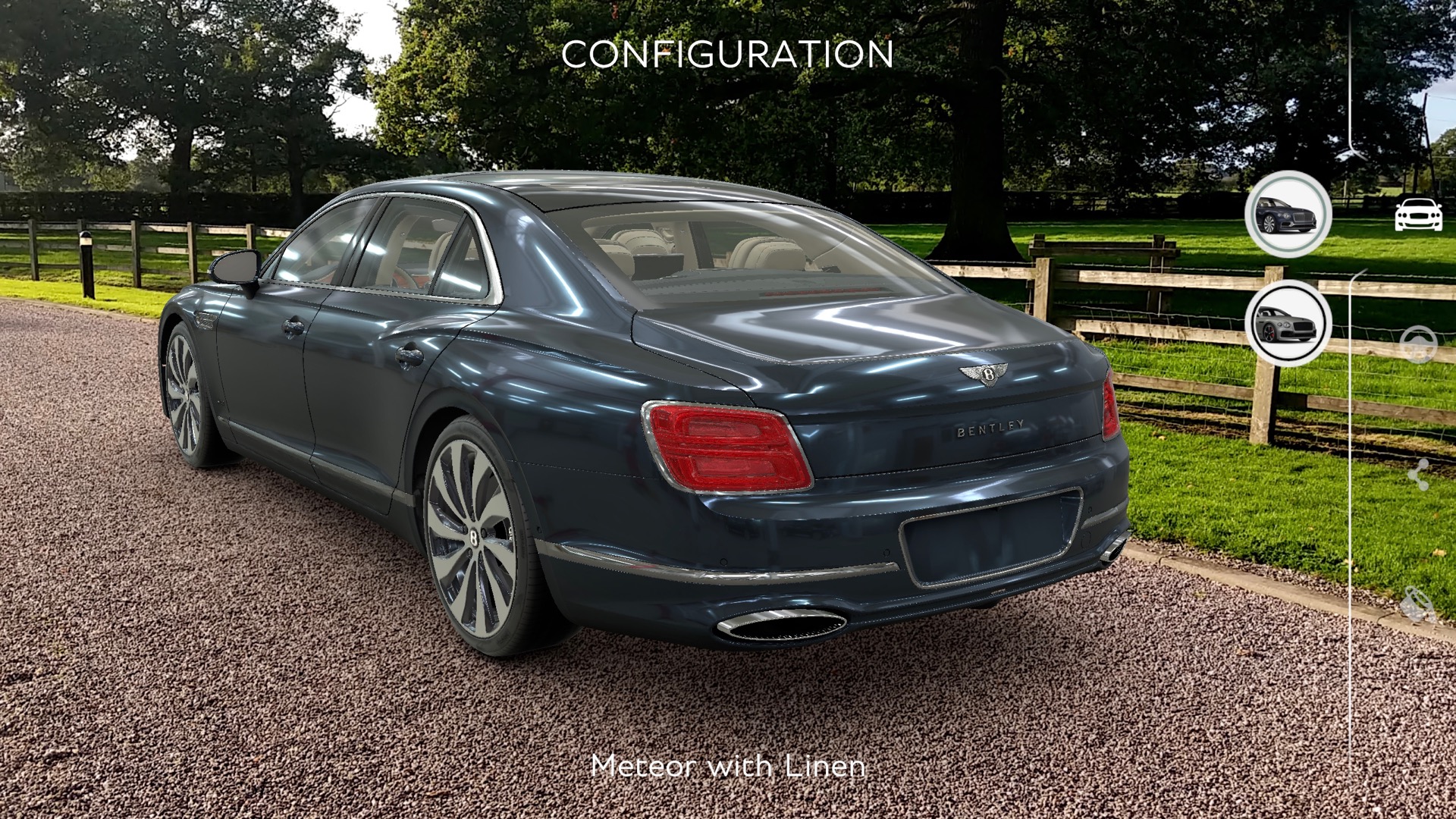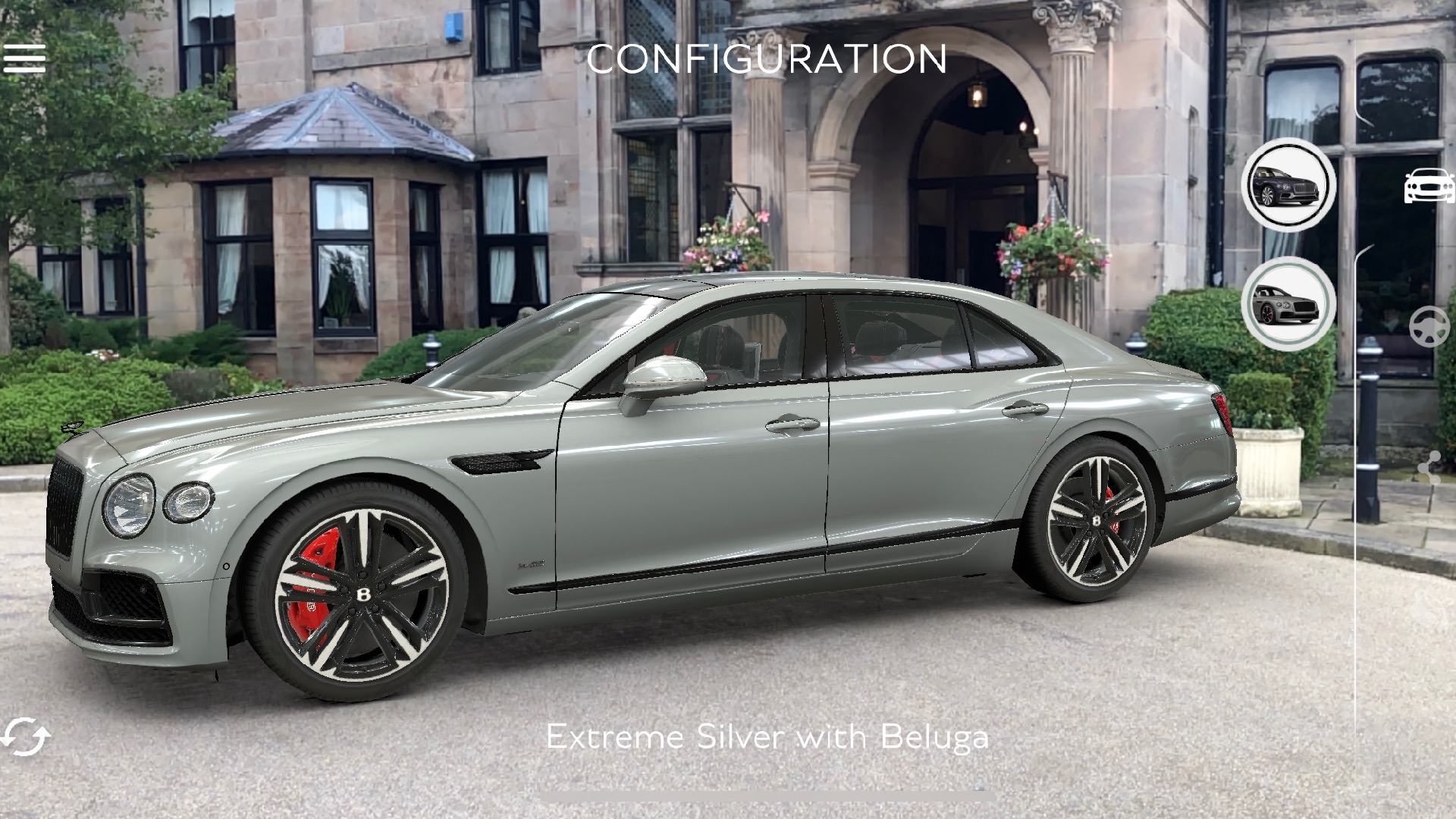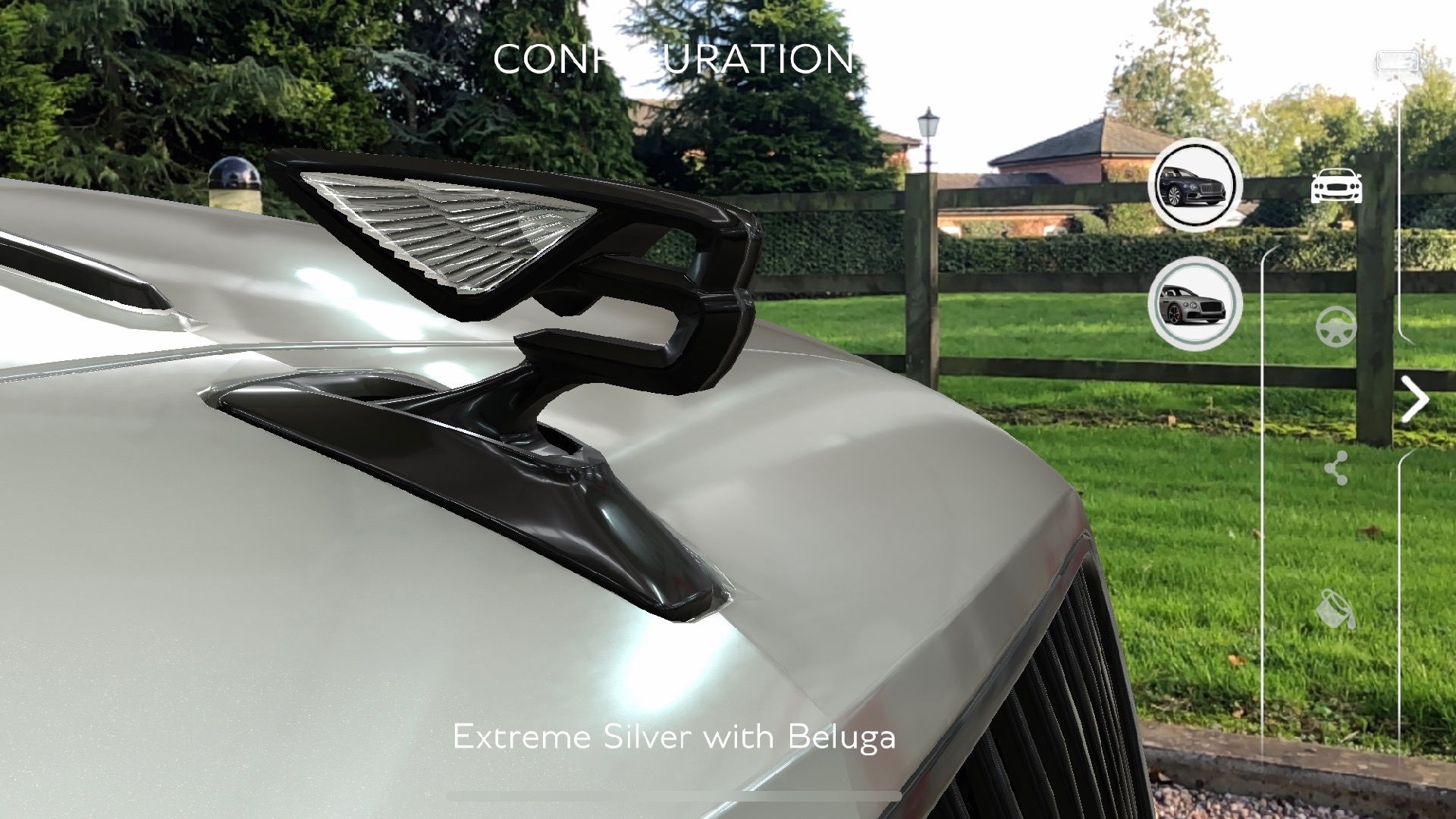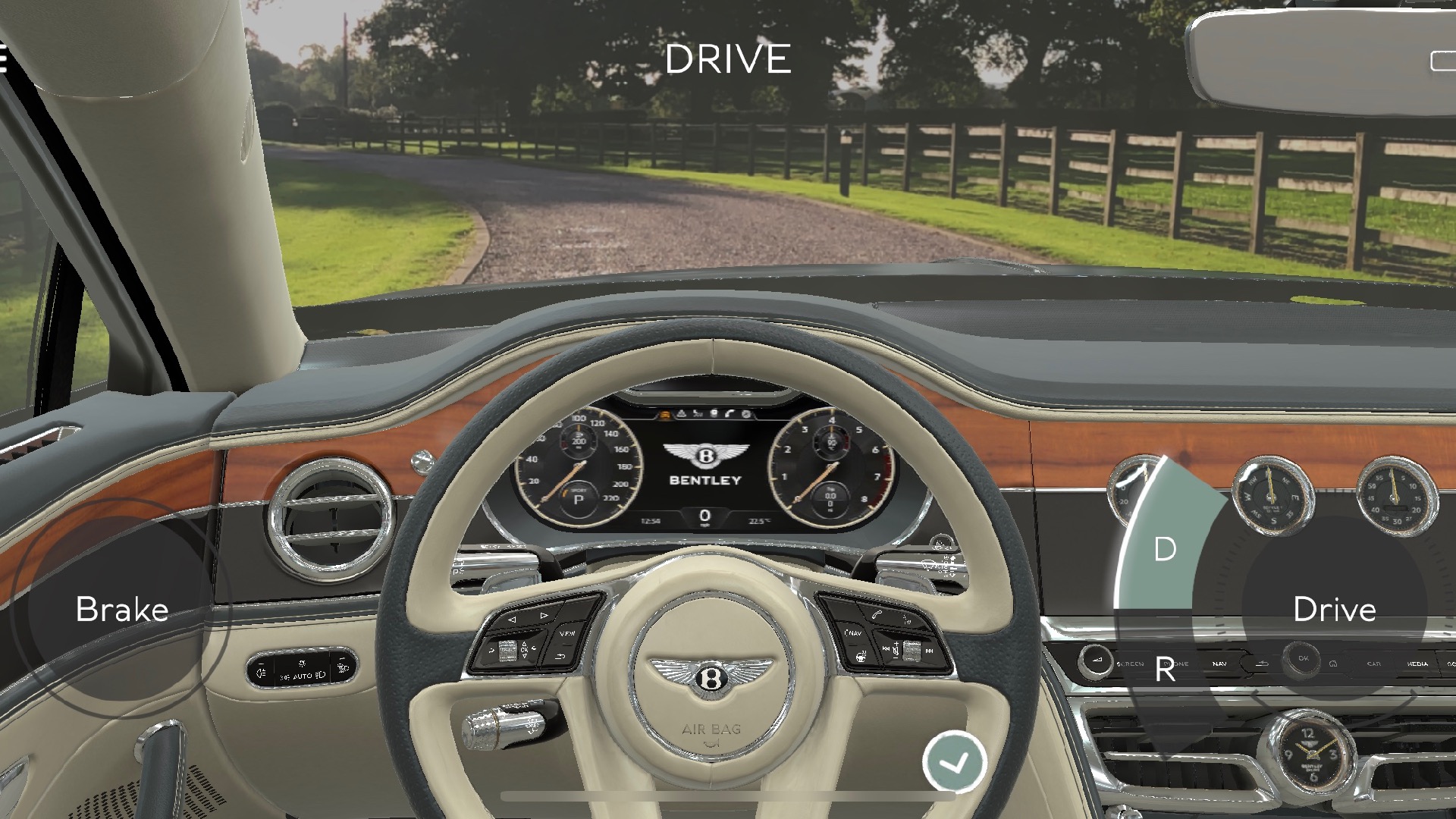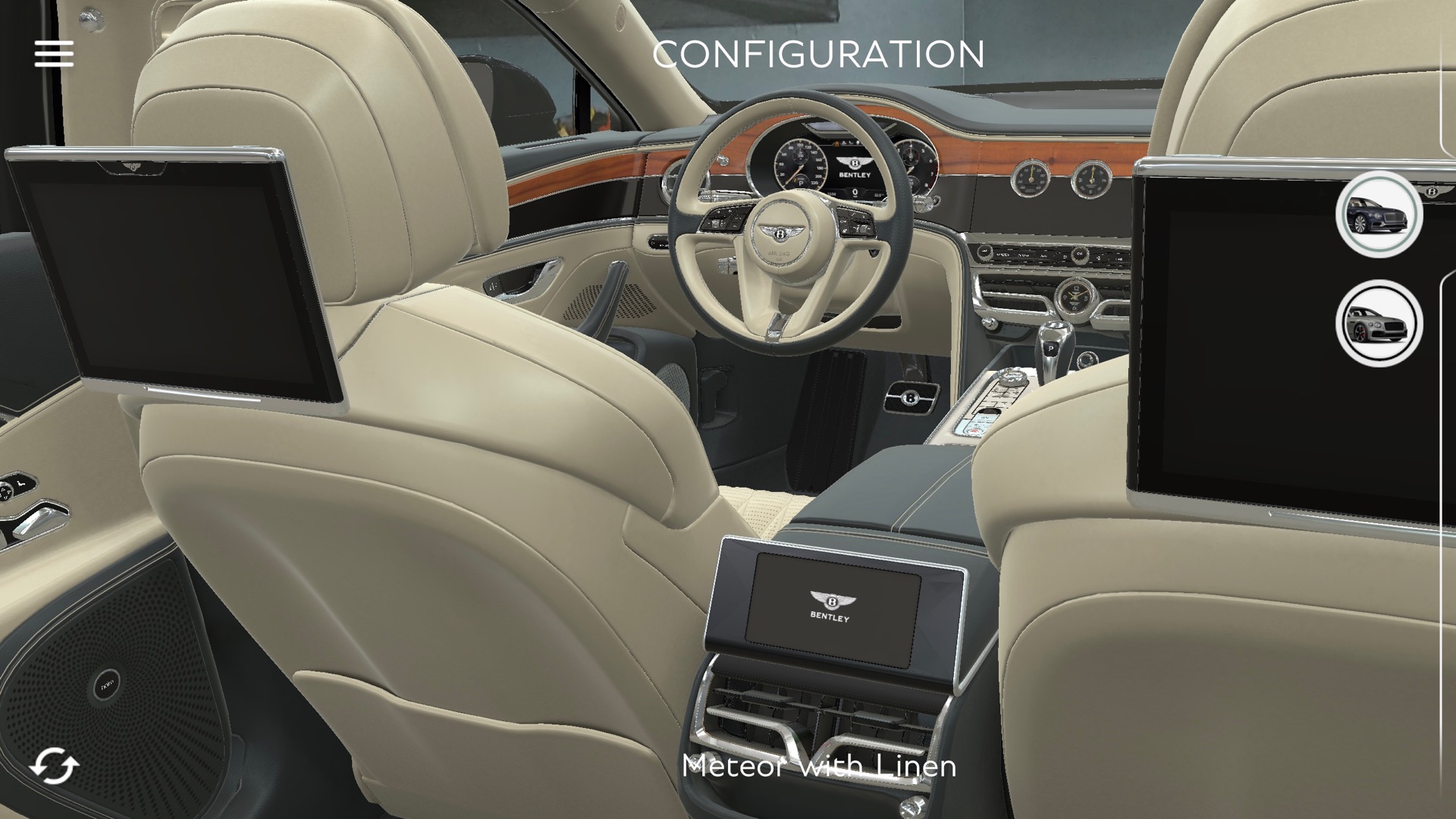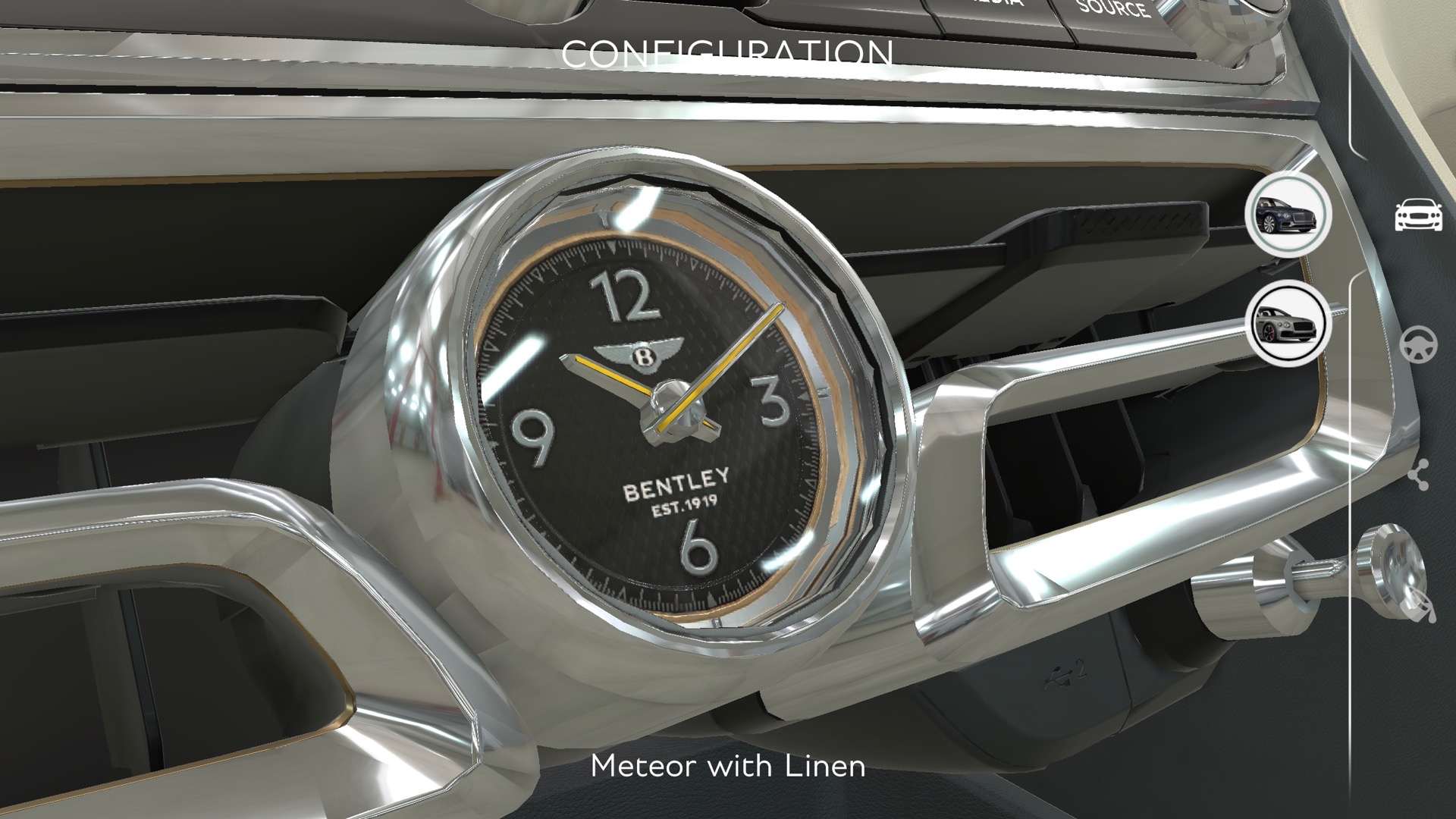With prices well into six figures, most people can’t afford a Bentley. But the British automaker has developed a way for those who aren’t part of the 1% to experience its luxury cars. Bentley created an augmented reality (AR) app for its EXP 100 GT concept, and now it’s done the same for the 2020 Flying Spur sedan.
Available for iOS and Android, the app lets users of the Flying Spur, Bentley’s newest production model. Users can do a virtual walk-around of the car, as well as climb in and take a virtual test drive. In addition to displaying a full-size car, the app can shrink it down to a tabletop-sized model, according to Bentley.
Bentley owners can personalize their cars through a myriad combination of colors and trim materials, but Bentley has narrowed it down to two options for the app. The “Luxury” specification has a Meteor (gray) exterior, with an interior finished in Brunel and Linen leather. The “Performance” specification has an Extreme Silver exterior with Beluga (as in the caviar) leather and Hotspur (red) accent stitching. This version also gets Bentley’s new “Blackline Specification,” with black exterior trim.
Both versions of the car have a rear-seat entertainment system and the Bentley Rotating Display, which switches between a 12.3-inch infotainment touchscreen, a set of three dials, and a blank wood panel at the push of a button. It’s a pretty effective (albeit expensive) way to digitally detox.
The 2020 Flying Spur is based on the underpinnings of the latest Bentley Continental GT, so you get both limousine-like luxury and sports car performance. Under the Flying Spur’s massive hood sits a 6.0-liter, twin-turbocharged W12, making 626 horsepower and 664 pound-feet of torque. That titanic force is channeled to all four wheels through an eight-speed, dual-clutch transmission. Despite weighing around 5,500 pounds, Bentley claims the Flying Spur will do zero to 60 mph in 3.7 seconds, and reach a top speed of 207 mph. That’s faster than an Aston Martin Vantage.
Bentley is celebrating its 100th anniversary in 2019, but that doesn’t mean this automaker is stuck in the past. AR apps aren’t the only tech Bentley is working with. Bentley plans to add a hybrid powertrain to every model by 2023, and has already started by releasing a plug-in hybrid Bentayga SUV. The hybrids will be followed by the first all-electric Bentley in 2025.
Editors' Recommendations
- Can’t afford the Nintendo Switch Lite? You can now put it on layaway at GameStop
- You can unlock Lincoln’s massive 2020 Navigator with your phone
